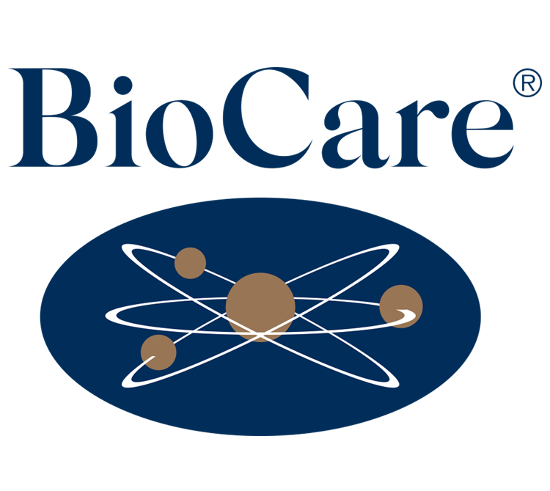It’s dry, itchy, and inflamed… can you guess? Yes, we are talking about dermatitis, more commonly known as eczema. But did you know that dermatitis actually refers to a group of conditions and includes many different sub-types? The most common ones being atopic dermatitis, contact dermatitis, and seborrheic dermatitis.
Atopic dermatitis (atopic means ‘with a genetic predisposition) is the most common form, affecting 1 in 5 children and 1 in 12 adults in the UK.[i] It is characterised by dry, itchy patches commonly localised to the neck, hands, feet, elbows, and the back of the legs. Children who appear to outgrow it can continue to have ‘sensitive’ skin as adults and may go on to develop other allergic conditions, such as asthma. The journey that leads to the first flare-up of eczema usually starts very early on, from birth and even in utero. A good understanding of what this usually looks like paves the way for implementation of a holistic, effective protocol for an individual with eczema, so let’s dive in.
In the Womb: A Natural Predisposition
To understand what is happening on the outside of the body (e.g. skin complaints), we must always assess what is going on inside. The principal imbalance underlying the development and progression of eczema is dysregulation of the immune system and this can start very early on indeed.
A well-balanced immune system usually relies on two branches of the immune system, T helper cell 1 (Th1) and T helper cell II (Th2), working in harmony with each other in a state of dynamic balance. Th1 cells generate a response against intracellular pathogens (bacteria, viruses, abnormal cells…), whilst the Th2 side targets extracellular pathogens (toxins, parasites, allergens…). When one of these two sides is activated to address an acute threat, both sides should quickly return back to balance in order to maintain immune homeostasis.
During pregnancy, the maternal immune system must adapt in order to ensure acceptance of the foetus as ‘self’ rather than ‘foreign’. To achieve this, it suppresses the Th1 side to the degree required to ensure immune tolerance of the growing baby, and in doing so, a state of Th2 dominance is created.[ii] Maternal Th2 dominance is then shared with the baby in utero, predisposing them to allergy when they are born.[iii],[iv]
At Birth: Striving for Balance
Fortunately, nature has a plan! After birth, the infant’s gut should be colonised by diverse, abundant colonies of beneficial bacteria, mostly transferred from mum via a vaginal delivery and/or breastfeeding. This confers many health benefits for the infant, not least by helping to re-balance Th1 and Th2 to ensure a tolerant immune system.
However, birth by C-section, formula feeding, and early antibiotic use, impair proper development of the infant’s gut microbiome. Together with low maternal vitamin D status, which increases the risk of the infant being low in this critical immunomodulatory nutrient, Th2 dominance can start to persist far longer than it should. This persistence increases the risk of the infant’s immune system becoming hyper-sensitive to the environment and so, allergic.[v],[vi] Indeed Th2 dominance has been identified in eczema sufferers from birth,[vii] and reduced diversity of the gut microbiome is a common finding amongst children with eczema too, which highlights the role played by the gut in the development of this condition.
This immune dysregulation drives an increased production of antibodies (IgE) which causes excessive immune reactions to otherwise harmless substances (e.g. pollen, dust, proteins found in certain foods). This increases the baseline level of inflammation within the body, which can eventually over-stimulate and irritate cells in the epidermal layer of the skin, contributing to an eczema flare-up.
A Heightened Immune System
As the immune system remains activated, the body can also release higher amounts of histamine to increase the permeability of blood vessels and allow immune cells and proteins to get to specific tissues. Individuals with allergies tend to have a higher baseline histamine level,[viii] prolonging inflammatory response and creating a vicious cycle.
Chronic intestinal hyperpermeability (or ‘leaky gut’) can further contribute to allergens penetrating the gut barrier[ix] and the cycle of chronic inflammation, contributing to eczema.[x]
Outside - in: Adapting to our environment
The local role of the skin is also important and needs to be considered in all types of dermatitis. The same way our gut hosts billions of bacteria, the skin also has its own ecosystem with various bacteria involved in the development and maintenance of skin immunity. Disruption of the skin microbiome can affect the integrity of the skin layer, increasing the entry of toxins, microbes, and allergens, driving skin inflammation and dry, itchy skin.[xi]
Toxin exposure is a major problem for most people, but a fortiori for people who are already sensitive to environmental allergens. Over the past few decades, toxin levels have gradually increased with the employment of pesticides and insecticides in agriculture, our changing lifestyles that include air pollution and toxic cleaning products and skincare. Sadly, even babies in the womb are now affected. The umbilical cords of 10 babies were examined and more than 200 industrial compounds, pollutants, and other chemicals were found in each newborn. [xii]
So, how to manage eczema?
First of all, try to eliminate anything that puts a burden on the immune system. This applies to food, but also to products that you are exposed to on a daily basis.
- Food allergens can exacerbate symptoms. Cutting out or reducing dairy, wheat and eggs can be very helpful to start with. They contain proteins that have been implicated in eczema.[xiii] You can replace them with naturally gluten-free foods, and coconut or nut-based alternatives.
- Buy more organic produce, to reduce exposure to pesticides, If you are on a low budget, look at the ‘Dirty 12 Clean 15’ list put together by the Pesticide Action Network UK, to know which foods to prioritise.
- A house detox might also be useful to minimise environmental toxin exposure. Use natural household cleaning supplies, cosmetics and body products, and when possible, paints and home furnishings. Using a HEPA air filter in the bedroom can also be useful.
As mentioned previously, it all starts in the gut.
- A great starting point would be to take a daily probiotic which can be useful to balance the Th1 and Th2 immunity.[xiv],[xv],[xvi] You can also increase your intake of probiotic-rich foods, such as fermented tofu, tempeh, sauerkraut, coconut kefir, and kimchi.
- Gut healing nutrients, such as glutamine[xvii] and zinc[xviii]can also be used to maintain a healthy gut lining.
- If chronic digestive symptoms persist, it might be helpful to contact a Nutritional Therapist to do some comprehensive stool analysis to assess digestion and the presence of pathogens, such as certain bacteria or parasites, which can drive inflammation even further.
Address nutrient deficiencies:
- Vitamin D modulates the immune system[xix] and low vitamin D levels are associated with eczema.[xx] Supplement with a daily level (at least 1000IU), and if possible check your blood levels with a finger prick test via a private lab, or through your GP.
- Omega-3 fats, found in oily fish, chia and flaxseeds, walnuts, and avocados, can provide support for skin health and reduce inflammation. Omega-3 fats reduce improve skin hydration and reduce the severity of eczema.[xxi]
- Zinc can strengthen the skin’s protective layer[xxii] and encourage healing.[xxiii] Zinc also plays a role in supporting our immune system, so it can be beneficial for those with allergies.[xxiv] Dietary sources of zinc include meat, shellfish, beans, lentils, nuts, and seeds.
- Vitamin C found in bell pepper, broccoli, kale, citrus fruits, kiwis, and papaya, can help detoxify histamine[xxv] and support collagen production[xxvi] to maintain a good skin structure.
Reduce stress and improve sleep:
- Chronic stress can drive gut permeability and affect tissue repair. A study on healthy women found that both stress and sleep deprivation could disrupt skin barrier function.[xxvii]
- Manage your stress by scheduling daily self-care, practising meditation or deep-breathing exercises such as the ‘Box Breathing’ technique. Daily journaling and art therapy can also help you unwind and reduce your stress levels.
- Sleep is your ultimate repair time, so make sure you optimise both the quantity of sleep and the quality. Aim for 8 hours of sleep every night, keep a regular sleep/wake cycle to help your body get in a good routine, and create a relaxing bedtime routine by avoiding screen use 1h before bedtime, keeping your room cool, and doing something relaxing in the evening.
Topical products can also be of great help to provide relief, especially if itching is also present. Keeping the skin well moisturised is important. Use organic products that contain calendula, chamomile, or lavender, for a soothing and anti-inflammatory effect.
Eczema is a multifactorial condition, which is why it is important to approach these conditions with a holistic and comprehensive support.
Get in touch with one of our Nutritionists for more personalised product support and advice.
Got a question?
The brand you can talk to:
We have a team of friendly Nutritionists at the end of our advice line, open to you, for free expert health and product advice (5 days a week). 0121 433 8702 or clinicalnutrition@biocare.co.uk.
Or head to our advice page where you can find Healthnotes.
Not registered for an account with BioCare®?
You can register now to receive up to date news, product information and exclusive offers whether you are a consumer, practitioner or retailer.
References
[i] http://www.eczema.org/what-is-eczema
[ii] Morelli, S., et al. The maternal immune system during pregnancy and its influence on fetal development. Research and Reports in Biology. 2015; 6: 171-189.
[ii] Sandberg. Total and allergen-specific IgE levels during and after pregnancy in relation to maternal allergy. J Reprod Immunol. 2009; 81 (1): 82-8.
[iv] Berger A. Th1 and Th2 responses: what are they? BMJ. 2000; 321 (7258):424.
[v] Farooqi IS, Hopkin. Early childhood infection and atopic disorder. JM. Thorax. 1998;53:927-932.
[vi] Wei et al.Pediatr Allergy Immunol. Maternal vitamin D status and childhood asthma, wheeze, and eczema: A systematic review and meta-analysis.2016;27(6):612-9
[vii] Abrahamsson et al. A Th1/Th2-associated chemokine imbalance during infancy in children developing eczema, wheeze and sensitization. Clin Exp Allergy. 2011; 41 (12): 1729-39.
[viii] Anvari S et al. Genetic Variation along the Histamine Pathway in Children with Allergic versus Nonallergic AsthmaAm J Respir Cell Mol Biol. 2015;53(6):802-9.
[ix] Fasano A. Leaky gut and autoimmune diseases. Clin Rev Allergy Immunol. 2012;42(1):71-8.
[x] Rosenfeldt et al. J Pediatr. Effect of probiotics on gastrointestinal symptoms and small intestinal permeability in children with atopic dermatitis.2004;145(5):612-6.
[xi] Kong HH, Segre JA. J Invest Dermatol. Skin Microbiome: Looking Back to Move Forward. 2012;132(3 0 2):933-939.
[xii] Chemical analyses of 10 umbilical cord blood samples were conducted by AXYS Analytical Services (Sydney, BC) and Flett Research Ltd. (Winnipeg, MB).
[xiii] Finn et al. Serum IgG antibodies to gliadin and other dietary antigens in adults with atopic eczema. Clin Exp Dermatol. 1985; 10: 222-8.
[xiv] Majamaa. Probiotics: a novel approach in the management of food allergy. J Allergy Clin Immunol. 1997; 99: 179-85.
[xv] Pelucchi et al. Probiotics Supplementation During Pregnancy or Infancy for the Prevention of Atopic Dermatitis A Meta-analysis. Epidemiology. 2012; 23: 402-14.
[xvi] Allen et al. Probiotics and Atopic Eczema: A double-blind randomised controlled trial. Arch Dis Child. 2012; 97: A2.
[xvii] De-Souza DA, Greene LJ. Intestinal permeability and systemic infections in critically ill patients: Effect of glutamine. Crit Care Med. 2005 May;33(5):1125-35.
[xviii] Sturniolo GC, et al (May 2001). "Zinc supplementation tightens "leaky gut" in Crohn's disease". Inflamm. Bowel Dis. 7(2): 94–8
[xix] Piemonti et al. Vitamin D3 Affects Differentiation, Maturation, and Function of Human Monocyte-Derived Dendritic Cells, The Journal of Immunology. 2000; 164: 4443-51.
[xx] Wang et al. Vitamin D deficiency is associated with diagnosis and severity of childhood atopic dermatitis. Pediatr Allergy Immunol. 2014; 25 (1): 30-5.
[xxi] Mayser P et al. A double-blind, randomized, placebo-controlled trial of n-3 versus n-6 fatty acid-based lipid infusion in atopic dermatitis. JPEN J Parenter Enteral Nutr. 2002;26(3):151-8.
[xxii] Rostan EF et al. Evidence supporting zinc as an important antioxidant for skin., Int J Dermatol. 2002;41(9):606-11
[xxiii] Schwartz et al. Zinc and Skin Health: Overview of Physiology and Pharmacology. Dermatologic Surgery. 2005; 31: 837-47.
[xxiv] Gupta M et al. Zinc therapy in dermatology: a review. Dermatol Res Pract. 2014;2014:709152.
[xxv] Johnston et al. J Am Coll Nutr. Antihistamine effect of supplemental ascorbic acid and neutrophil chemotaxis. 1992;11(2): 172-6.
[xxvi] Boyera et al. Effect of vitamin C and its derivatives on collagen synthesis and cross-linking by normal human fibroblasts. Int J Cosmet Sci. 1998; 20 (3): 151-8.
[xxvii] Altemus et al. Jounral of Investihative Dermatology. Stress-induced changes in skin barrier function in healthy women. 2001; 117(2); 309-17





